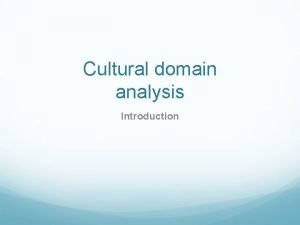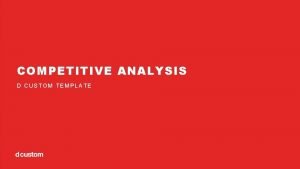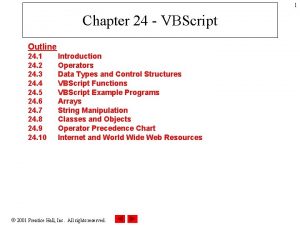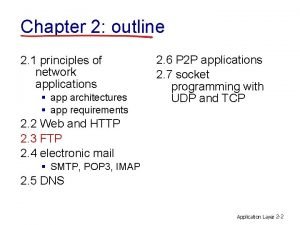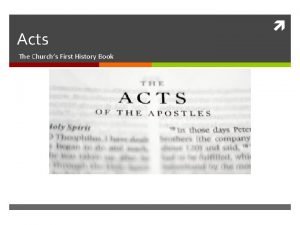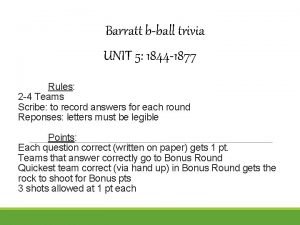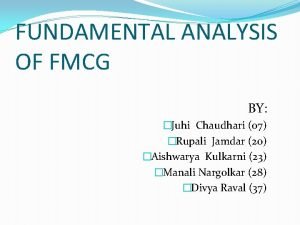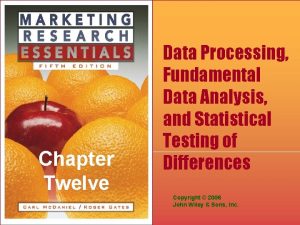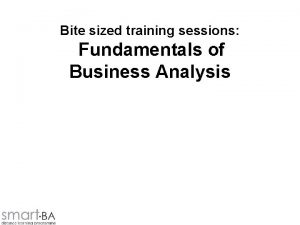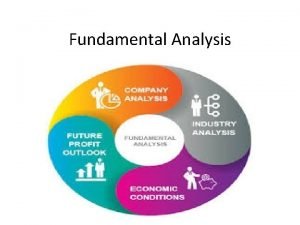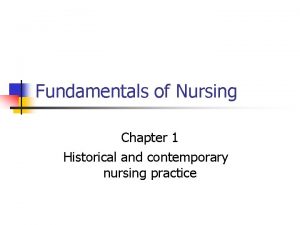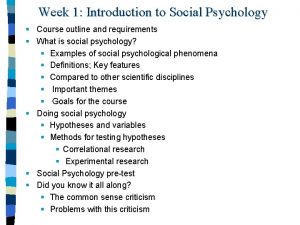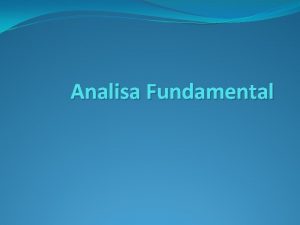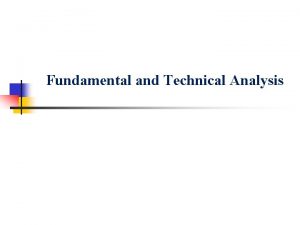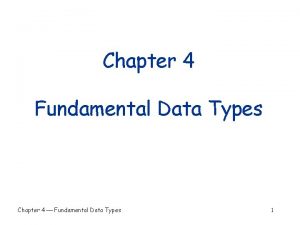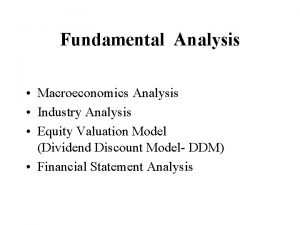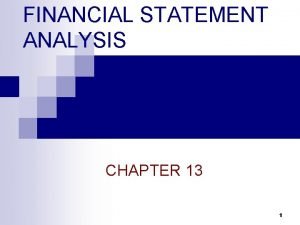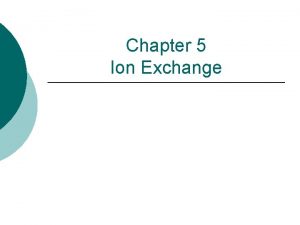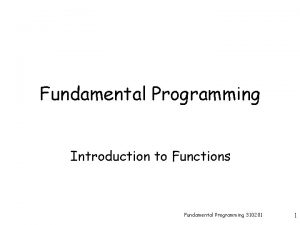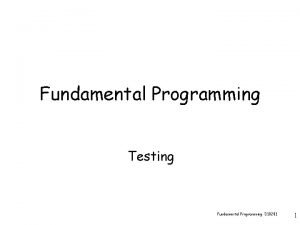Chapter 6 Fundamental Analysis Fundamental analysis outline A








































- Slides: 40

Chapter 6: Fundamental Analysis

Fundamental analysis: outline A. What is it about? B. Analysis C. Sources of information D. For further study

A. What is it about? Finding fair value of stocks. n Objective is to check if market price is cheap, fair, expensive for investment – Buy, Hold, or Sell or to explain the change of market price. n

B. Analysis: stock valuation process 1. Understand firm and stock’s nature 2. Forecast 3. Choose valuation method 4. Make decision

1. Understand firm and its stock’s nature n From company itself n n n Financial statements, IR From other sources n n n Research paper, Firm’s competitors Etc.

2. Forecast Make assumptions n Information, information n

Information’s issues What information is relevant? News concerning risk and return n When will it come out? n

Getting start (use consolidated) Restatements and work from restated statements. n Analyze relevant data and forecast: revenue break-down, cost break-down n

Analysis: Top down n Bottom up n Top down and bottom up n

Top down / Bottom up n Top down: n n n Bottom up n n Economy -> industry -> firm -> stock Globalization – impact. Firm -> industry -> economy Top down and bottom up: n Economy <-> industry <-> firm <-> stock

Economy Economic variables: GDP growth rate, unemployment rate, etc. n Economic life cycle: changing n Domestic & international: globalization impact n

Industry Porter’s 5 forces n Boston matrix: star, dog, cash cow, question mark n Change in external factors: social, regulations, consumer’s taste, etc. n Industry life cycle: sun-rise, sun-set n

Company Management quality n Accounting – clean, dirty n Business nature - income, cost, margin’s volatility, key success factors, position, strength, weakness etc. n Financing n Growth opportunity n

Company n Dream & do

Remarks If the success (failure) is consistent or temporary. n Past success doesn’t guarantee future success. n

Understand the stock’s nature Major investors n Sensitive to foreign fund flows n Defensive or cyclical n Etc. n

3. Choose valuation methods n Choosing criteria: n n n Characteristics of firm Data: availability, quality Valuation methods n n Discount cash flows Price multiples

Discount cash flows n Discount rate n n Cash flows n n CAPM, APT Dividends, Free cash flow for firm (FCFF), Free cash flow for equity (FCFE), Residual income (RI) Growth rate n = ROE x b

Price multiples n Price Multiples n n Link to competitors, industry, past Link to company’s fundamentals – discount cash flows

Price multiples: PE multiple n Trialing PE (Current PE) Po/E 1 = (D 1/E 1)/(r-g) = (1 -b)/(r-g) n Leading PE (Forward PE or Prospect PE) Po/Eo = {[Do(1+g)]/Eo)}/(r-g) = [(1 -b)(1+g)]/(r-g)

Price multiples: PBV multiple Book Value is unlikely to be negative. n Compared to earnings, book Value is less manipulated. n PBV = (ROE-g)/(r-g) n

Price multiples: P adj BV multiple n Adjusted BV = BV – (NPV – Acc. Provision)

Price multiples: PS multiple No negative sales n Sales is less likely to be manipulated. n Po/So =(Eo/So)(1 -b)(1+g)/(r-g) n But sales might not mean profit. (No information on cost structure)

Price multiples: PCF n Cash flow n n n EPS + non-cash charge CFO FCFE EBITDA Less manipulation

4. Make decision Buy (undervalued, buy, trading buy, strong buy) n Sell n Hold n

Some technical terms in fundamental analysis n n n ARPU GRM Baglog BDI NIM L/D ratio CAR CASA CAPEX OPEX P&L B. E. 1. 1

C. Sources of information Anything affecting company’s earnings (growth, volatility) n n Newspaper: local (Bangkok Post, The Nation, Bangkokbiznews, etc. ) and international (The New York Times, Financial times, etc. ) Internet: www. settrade. com, www. set. or. th, www. sec. or. th, www. bot. or. th, www. nesdb. go. th, www. worldbank. org, www. imf. org, http: //www. efinancethai. net, etc.

C. Sources of information n Reuter, Bloomberg, Setsmarts, E-financethai Analyst meeting, opportunity day Company presentation

For novice What data? To under stand a company’s nature, start with 56 -1 form, company’s presentation, investment analysis paper, opportunity day meeting and company’s annual report n Where to find? n When it will be release? n

Financial data (SEC, SET) n Why SEC, SET? To be fair to public, companies should not provide financial data to a particular investor (or group) before public.

SEC_ financial statements

SET_ latest news


Opportunity day_ meet company’s management team

Company’s presentation n From company’s website.

Investment research paper

Where to find research paper? n Brokers

Where to find research paper? n Free? • Free?


For further study n Books: n n n Security analysis, Benjamin Graham and David L. Dodd, Mc. Graw-Hill, The intelligent investor, Benjamin Graham, Harper. Collins Publishers, Analysis of equity investments: valuation, John D. Stowe, Thomas R. Robison, Dennis W. Mc. Leavey, Association for Investment and Research, etc. Research paper Websites: n n www. tsi-thailand. org, www. ft. com, etc.
 Citation sandwich example
Citation sandwich example Cultural domain example
Cultural domain example Ad analysis outline
Ad analysis outline Competitive analysis outline
Competitive analysis outline Industry analysis outline
Industry analysis outline How to write a poem analysis essay
How to write a poem analysis essay Competitive analysis outline
Competitive analysis outline What is the labelling theory
What is the labelling theory Romans outline by chapter
Romans outline by chapter Component of research proposal
Component of research proposal Give me liberty chapter 27
Give me liberty chapter 27 Methodology chapter outline
Methodology chapter outline Chapter 38 a world without borders outline
Chapter 38 a world without borders outline Vbscript
Vbscript Hunger games chapter 26 questions and answers
Hunger games chapter 26 questions and answers Chapter 31 societies at crossroads
Chapter 31 societies at crossroads General hero
General hero Advantages and disadvantages of observation method
Advantages and disadvantages of observation method Chapter 1 outline
Chapter 1 outline Chapter 1 outline
Chapter 1 outline Agent orange and napalm
Agent orange and napalm Chapter 2 outline
Chapter 2 outline Sermon outlines on ananias and sapphira
Sermon outlines on ananias and sapphira 24 chapter outline
24 chapter outline 24 chapter outline
24 chapter outline Apush chapter 16 conquering a continent outline
Apush chapter 16 conquering a continent outline Fundamental analysis of fmcg sector
Fundamental analysis of fmcg sector Eic approach of fundamental analysis
Eic approach of fundamental analysis Twelve data
Twelve data Fundamental of business analysis
Fundamental of business analysis Fundamental analysis meaning
Fundamental analysis meaning Nursing chapter 1
Nursing chapter 1 P+p+p+p algebra
P+p+p+p algebra Chapter p prerequisites fundamental concepts of algebra
Chapter p prerequisites fundamental concepts of algebra Chapter p prerequisites fundamental concepts of algebra
Chapter p prerequisites fundamental concepts of algebra Secam stands for
Secam stands for Precis paragraph format
Precis paragraph format Writing an leq
Writing an leq Block method outline
Block method outline Features of social psychology
Features of social psychology Lesson outline lesson 3 describing circuits answers
Lesson outline lesson 3 describing circuits answers

